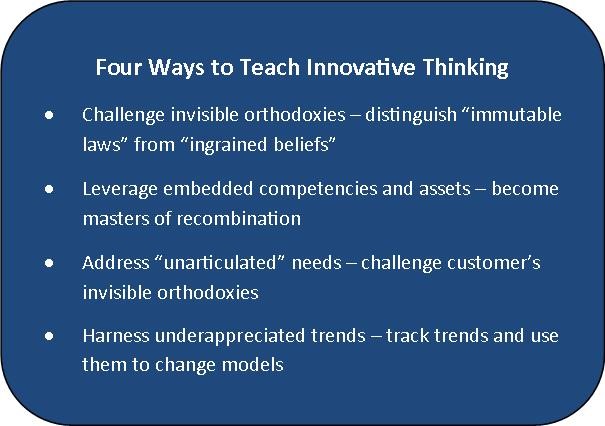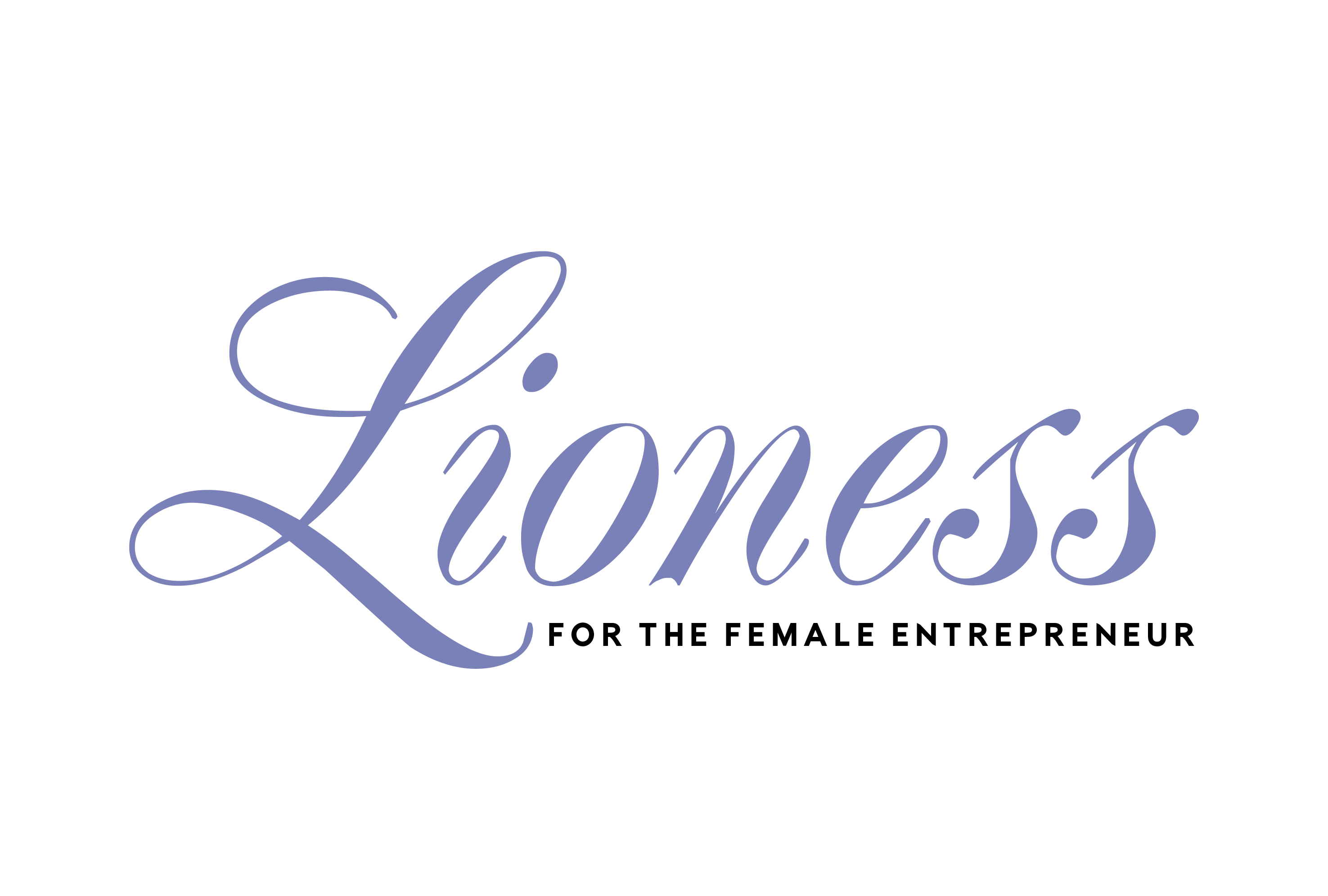 For a firm to become truly innovative, Gary Hamel and Nancy Tennant suggest in their recent Harvard Business Review article all employees should be taught to think like innovators. In this view, explained in a previous blog, innovation is not the exclusive purview of a few creative geniuses, but stems from an environment which percolates and cherishes innovative thinking.
For a firm to become truly innovative, Gary Hamel and Nancy Tennant suggest in their recent Harvard Business Review article all employees should be taught to think like innovators. In this view, explained in a previous blog, innovation is not the exclusive purview of a few creative geniuses, but stems from an environment which percolates and cherishes innovative thinking.
Hamel and Tennant offer four specific ways to encourage the pre-requisite thinking (see graphic). An unrelated article by Morton Bennedsen and Nicolai Foss in the California Management Review attempts to draw links between family assets and firm innovation based on extensive historic examples from around the world. The overlap between the two articles is striking and suggests family-owned firms, when managed successfully, may be the perfect laboratory to teach innovation to the next generation.
Challenging Orthodoxies
Families as a social system operate under a different set of constraints and expectations than a business, balancing issues of respect, appreciation, obligation and loyalty in very different ways than a standard employment relationship. In many cases, family identity and family loyalty bind the family to the firm with bonds of commitment and stewardship which may incline the family to hold the firm for generations. Over that period of time, market forces demand innovation to ensure survival. Bennedsen and Foss suggest this concentrates families’ attention and energy to removing roadblocks to innovation. They share three historically successful approaches: invite young family members to try out new ideas, invest through a family investment fund which provides an independent source of funding and use external consultants to challenge accepted norms within the firm.
Leveraging Embedded Competencies
When family history and public identity are positively associated with brand and product reputation there may be further opportunities to leverage family identity. Brand extension and market growth can be aided by a family name in ways a non-family brand name cannot. As an example, Apple may be able to expand into other technological markets related to computing and mobility, but the brand identity may not extend much beyond closely related industries. In contrast, the Kohler family isn’t exclusively tied to the kitchen and bath accessories industry which generated their wealth. They have effectively extended their family name to encompass a luxury resort and championship golf courses. The name now carries status and business success, which can be leveraged across industries.
The family name can also be leveraged in networking and investment circles for means beyond the firm, and allow the family to extend their ventures outside a primary identity. Access to knowledge and capital allow for greater diversification and ultimately cross-pollination of ideas within a family. The Rothschilds famously utilized their network of operations on different continents to amass one of the largest fortunes in Europe. They were able to open doors that simply aren’t open for everyone because they effectively used the power of their name while sharing new ideas and information across different ventures. The Rothschilds highlight how the power of a family name can carry more legitimacy and be more powerful than brand recognition.
Unarticulated Needs and Underappreciated Trends
When a family internalizes the entrepreneurial spirit, an entire set of behaviors encourages innovation including alertness to opportunities and willingness to implement them. Entrepreneurship as family identity is bolstered through the family story and the role-modeling from parent to child. A fascinating study found parental entrepreneurship increased the probability of children’s entrepreneurship by about 60%! The paper suggests the mechanism driving this is role-modeling, rather than education, access or financial advantages. A parent demonstrating the value of innovation and entrepreneurship may cause children to re-calibrate the risk/reward relationship in favor of taking chances. This makes the family a unique mechanism for generating innovation in family-owned firms.
Generational shifts in attitudes toward technological advances may yield new insights into previously unconsidered consumer needs or new ways to deliver on those needs due to technology trends. The speed of global inter-connected communication may yield new and exciting ways to deliver consumer needs and younger generations may have a better understanding on how to utilize new technology. An in-house incubator or a stand-alone family private equity fund may help capitalize on these insights for the mutual financial benefit of the family. This creates a virtuous cycle, not only reinforcing the family identity as innovators, but also providing additional capital to finance further ventures. This has even been shown to be an effective model in generating new and useful ideas.
Becoming Truly Innovative
Innovation is critical to the long-term survival of any organization, but a family-owned firm may have some inherent advantages in becoming truly innovative. When recognized and leveraged properly, the family assets extend beyond financial resources. Mentoring and role-modeling from one generation to the next provides space and opportunity for the creation of new and useful ideas. Family reputation and family story create external and internal motivations, respectively, for a tradition of entrepreneurship based on innovation. Though families may face unique challenges in emotional and relationship dynamics, if those are properly managed, family-owned firms hold great potential to develop new ideas and build a lasting family legacy – a family legacy of innovation.
Robert J. Holton is Vice President, Private Client Group at Cleary Gull.








Add Comment